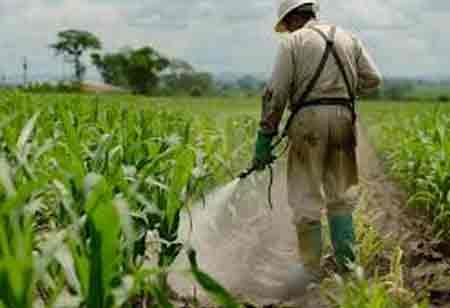Thank you for Subscribing to Agri Business Review Weekly Brief
Recent Development of Crop Protection Techniques
The crop protection industry has been undergoing rapid change due to trends and innovations in sustainability, efficiency, and efficacy.

By
Agri Business Review | Friday, May 02, 2025
Stay ahead of the industry with exclusive feature stories on the top companies, expert insights and the latest news delivered straight to your inbox. Subscribe today.
FREMONT, CA: Crop protection is a rapidly evolving field, driven by the growing demand for agricultural produce, increasing environmental awareness, and the adoption of new technologies. Exciting and innovative solutions are emerging to tackle these critical problems head-on. The goal is to ensure food security while meeting sustainability targets through advanced crop protection methods that adapt to the changing agricultural landscape and effectively safeguard crops against emerging threats.
One of the leading trends in crop protection today is the increased use of integrated pest management. Integrated pest management harmoniously integrates various approaches toward efficient management of pests with the most negligible environmental impact. This has been developed by using biological controls-natural predators or pathogens- to control pest infestations in conjunction with cultural practices such as the rotation of crops and resistant varieties. The operative principle is reducing chemical pesticides and encouraging a better ecosystem balance. This holistic approach enhances the control of pests and favors sustainable agriculture.
One of the areas, among those few, that also promises the future in crop protection is biotechnology. With the help of genetic engineering, the technology for genome editing uses CRISPR-Cas9 to develop crops with improved resistance to pests and diseases. This would be achieved by editing genes that make crops less prone to attacks from pests and pathogens; hence, chemicals used on crops are reduced. This promising innovation from biotechnology in enhancing crop yields and resilience creates more sustainable food production.
Other key trends in crop protection entail the development of precision in agriculture. Precision agriculture utilizes data-driven tools in an attempt to optimize farming. Those tools include drones, remote sensors, and satellite imaging capable of equally presenting current and updated data about crop health, soil conditions, and pest populations. It would also allow farmers to apply pesticides and fertilizers in a more targeted manner, for example, using just to the specific areas of need rather than treating entire fields. Precision agriculture tries to reduce the rate of chemical application and the resulting impact on the environment by enhancing the preciseness of applications, making agriculture more viable and sustainable.
Other complementary or alternative techniques to conventional chemical pesticides include sustainable and eco-friendly methods. Indeed, formulating bio-pesticides from natural sources such as plants, bacteria, or fungi is an encouraging alternative to synthetic chemicals. Most of these products have less harm to non-target organisms and the environment; hence, they can be helpful in integrated pest management programs. Plant-based repellents and natural insecticides are also being studied to reduce reliance on conventional chemical treatments.
Soil health is gaining prominence in plant protection since it contributes to pest management. Healthy soil improves plants' growth and builds natural resistance to pests and diseases. Management practices improve soil health through cover cropping, reduced tillage, and organic matter enrichment, thus making agricultural systems more resilient. This fosters a healthy soil ecosystem, reduces chemical dependency, and promotes sustainable crop protection.





